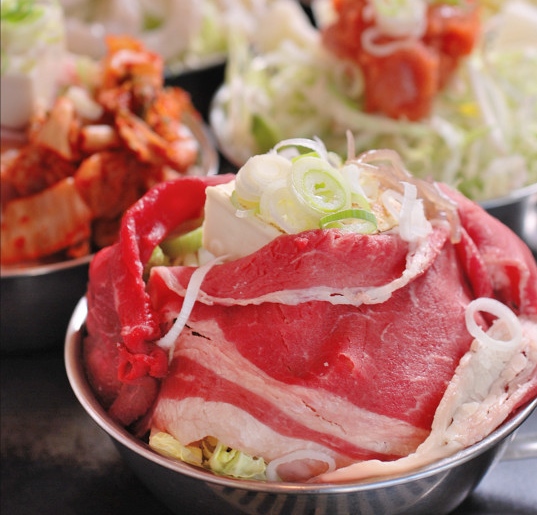
When people think of Japanese food, most think of sushi, sashimi or even some of the more popular Japanese comfort foods like okonomiyaki or udon noodles. If you’re a tourist, however, you’ve likely never experienced one of Tokyo’s most popular dishes: monjayaki. But don’t feel bad; even some Japanese people who don’t live in the Tokyo metropolitan area (75 percent of the population) have never tasted it. This is one reason why Tsukishima Monjadori, a street with over 100 monjayaki restaurants, ranks in the top five sight-seeing spots in the capital for Japanese tourists (FYI, the other four are Harajuku, Tokyo Disneyland, Odaiba and Tusukiji Fish Market).
Monjayaki is simple but complicated: it has just a few easy ingredients and can be made in under three minutes yet it requires instructions to make, and even eat, properly. It helps to know, for example, that monja is not usually eaten with chopsticks, and that there’s a good reason why.
Read on to learn more about this unexpectedly delicious fare: watch a how-to video showing you how to make it, check out photos that show you how to eat it, and get tips from a master monjayaki chef.
I first met monjayaki chef Yasutami Ōhashi (who goes by “Tommy”) when I came to Japan in 1994. At that time he was running a restaurant in Okayama City called “Hibachi,” where he served a varied menu of Japanese izakaya favorites such as braised fish, gyoza, and edamame, accompanied by lots of draft beer. Tommy cooked in the middle of the restaurant, surrounded by a counter which could seat up to 20 customers. Whenever you went into Hibachi, he’d immediately introduce you to the person sitting next to you giving both parties just enough information about each other to pique a conversation. Tommy knew that getting people to talk to each other was central to creating a friendly atmosphere where people would want to come back not just for the great food, but also to socialize.
▼Master chef Tommy Ōhashi is going to teach us how to make monjayaki.
In November of 1999, Tommy became the first person to introduce monjayaki to Okayama through his restaurant called Taiyo no Jidai (太陽の時代). It was so successful, he now has four restaurants, (two in Okayama City, one in Kurashiki, and one in Takamatsu) all specializing in monjayaki.
Taiyo no jidai means “sunny era” and refers to the new century we were about to enter when he started his endeavor. “People were trepidatious about the new century,” said Tommy. “They were worried about Y2K and some thought the world was going to end! I wanted people to be happy and optimistic about the future so I called my restaurant Taiyo no Jidai so people would have something bright to look forward to in the new year and the 21st century.”
Ingredients
Although the ingredients for monjayaki vary, Tommy treated me to three different dishes he makes at Taiyo no Jidai: 1. mentaiko (cod roe) & mochi 2. seafood & green onions 3. eggplant & cheese. These each arrived in separate metal bowls.
Underneath the main ingredients in the bowl were shredded cabbage and a liquid made by combining wheat flour (komugiko) and fish broth (dashi). “Monjayaki first became popular after WWII, ” Tommy explains, “because during the war when food was scarce, the easy mixture of flour and dashi was a cheap way for families to eat.” He then gave me his first tip to making tasty monja.
Tip #1: To make the best monjayaki, use the highest quality flour.
▼Tommy uses the same flour used to make cakes.
Next, he gave me a plate and one special utensil: a tiny spatula.
▼Plate and small spatula, called a moji-bera which means “word spatula.”
▼The teppan grill, the same as is used for okonomiyaki, is embedded in the middle of the restaurant table.
“Pencils and paper were also hard to come by during the war so children used the grill like a chalkboard to practice writing their letters in the flour and water mixture” Tommy said while pouring the mentaiko and mochi mixture onto the heated plate. “They’d draw letters with the small spatula. This is why the spatula is called moji-bera, or ‘word spatula.'”
With the monja on the grill, it is now time to use two bigger spatulas to beat it up! With a spatula in each fist, you cut up the ingredients rapid-fire by pounding the spatulas onto the grill thereby cutting up the ingredients (see video for action shot).
And Rocketeers, you can rejoice because this is one time when it’s okay to play with your food–in fact, it’s encouraged! Monja is surely the only Japanese food that allows you to get rid of stress, practice your drumming, and hone your culinary skills all while at the dinner table!
▼Go ahead, get your stress out, practice your drum roll!
When the ingredients are chopped small enough to make the monja a runny liquidy paste, let it rest to cook on the grill. After several more minutes, it’ll still be gooey but this time it’ll be ready to eat.
▼Monja on the grill, finished cooking and ready to eat!
You’ve probably noticed that monja is not very aesthetically pleasing: it would not win a culinary beauty contest. You could even say it looks kind of, well, sick. If you’ve ever gotten drunk on shots of tequila, you know what I mean. This unappealing visual was a big barrier for me the first time I ate monja. So I tried eating it with my eyes closed, which helped. But I eventually overcame the association with drunken tequila nights by thinking of dogs. Yes, dogs. When dogs throw up, they eat their vomit. Some people say this is instinct, but I don’t think so. I think dogs eat their vomit because…it’s delicious!
Monjayaki tastes best when it is piping hot, so eat it straight off the teppan plate with the moji-bera. There is a special technique, which brings us to Tommy’s second tip.
Tip No. 2: The proper way to eat monja is to pull off a portion with the moji-bera and press down on it to get the piece to stick to your spatula…
Then turn over the spatula and put it straight in your mouth.
The plate is there only if you need it, such as when the monja has been sitting too long on the grill and is burning and you want to get it off the grill quickly. Speaking of burning, Tommy has another tip for us now.
Tip No. 3: Don’t waste the okuge! It tastes good with beer.
▼Okuge is the burnt stuff on the hot plate, located around the perimeter of the liquid.
The fun in monjayaki is definitely in the creation of it on the grill and sharing the food among friends and family.
Here is a video of the entire process, which even shows you when and how to add the flour and dashi liquid:
Now you know how to make the perfect monjayaki. But Tommy has another tip for us!
Tip No. 4: You can make dessert monja!
This is a specialty of Taiyo no Jidai restaurant, and isn’t available anywhere else that I know of, but Tommy shows us that the same technique can be used to make a delicious strawberry dessert.
▼Strawberries and cream is just one of the dessert monja served at Taiyo no Jidai.
▼Yep, you’re gonna throw that beautiful concoction straight onto the grill!
▼And mix it and beat it up just like regular monja.
All that’s left to do is eat it with the moji-bera. The warm dessert melts in your mouth and tastes just like it has been baked in the oven–amazing!
There you have it, straight from the master chef who brought monjayaki to Okayama and started us all off with a sunny monjayaki 21st century. So Rocketeers, get to work making your own monja and be sure to let us know if you come up with something original and amazing that we just have to try!
Taiyo no Jidai has four restaurant locations in Western Japan:
Okayama Prefecture:
3-13-56 Omote-Cho, Okayama City 700-0822
1-17-2 Aoe Kita-ku, Okayama City 700-0941
619-2 Shimosho, Kurashiki City, 701-0112
Kagawa Prefecture:
4-20 Kajiyamachi,
Two Feet Bldg,
2F, Takamatsu 760-0028
Feature image courtesy of Taiyo no Jidai. All other images © Amy Chavez/RocketNews24

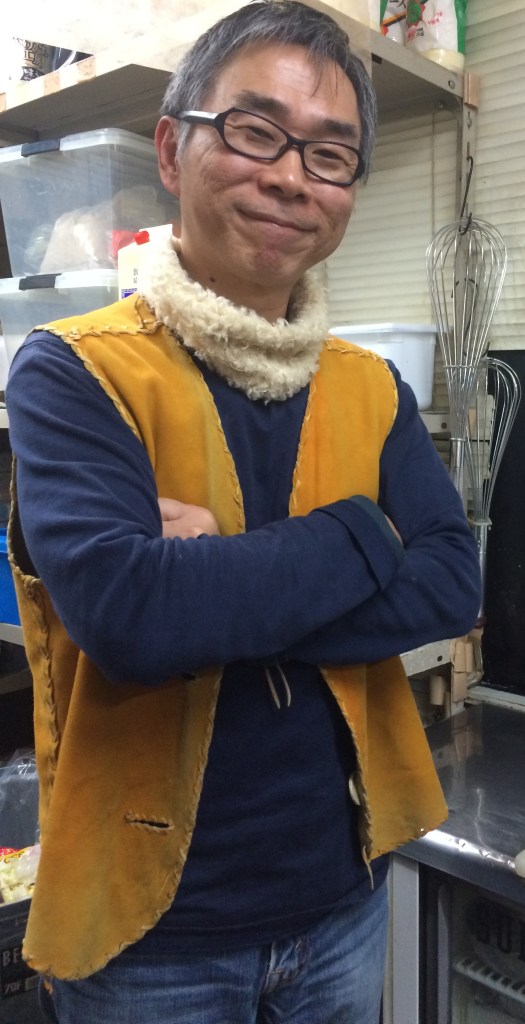

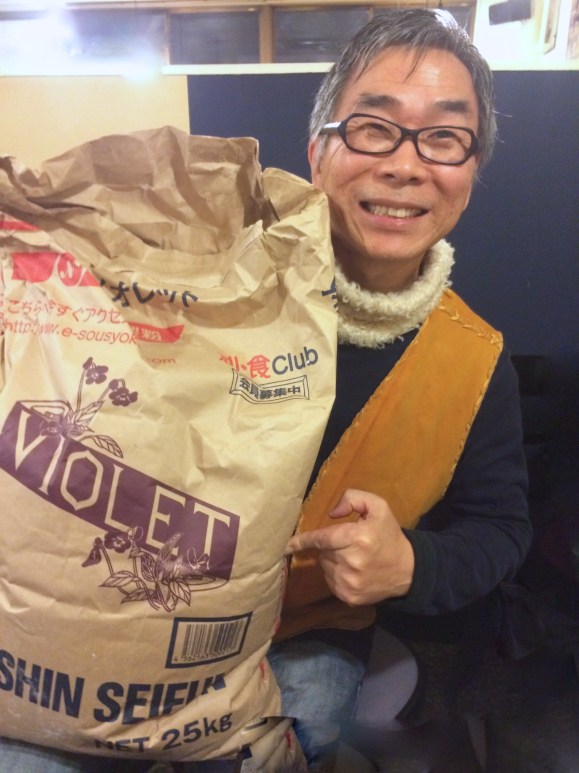
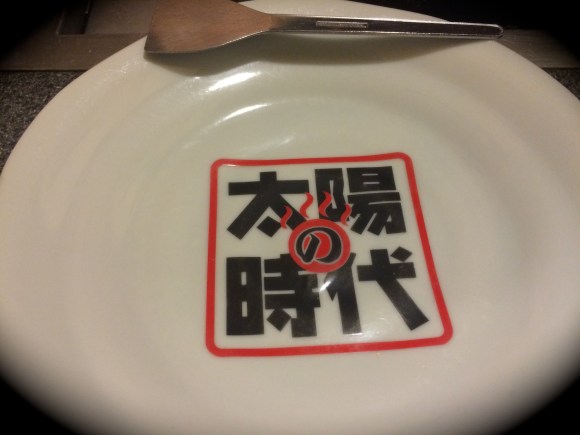

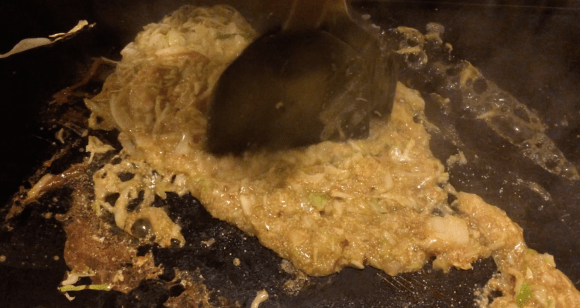
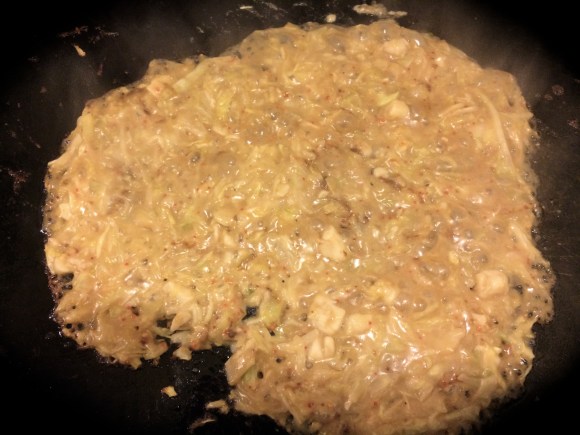
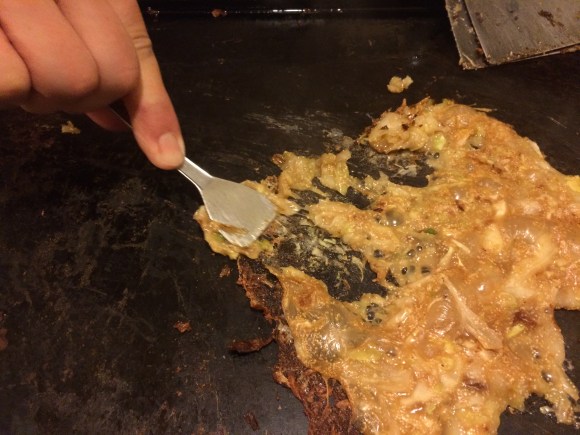
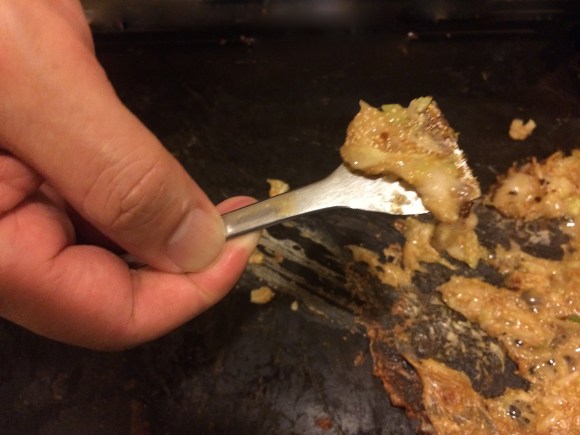
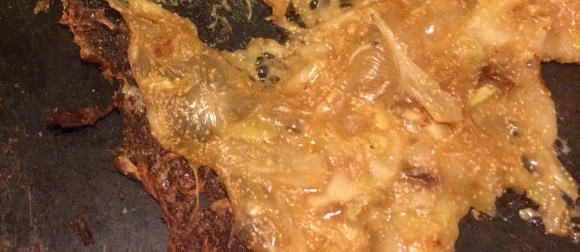
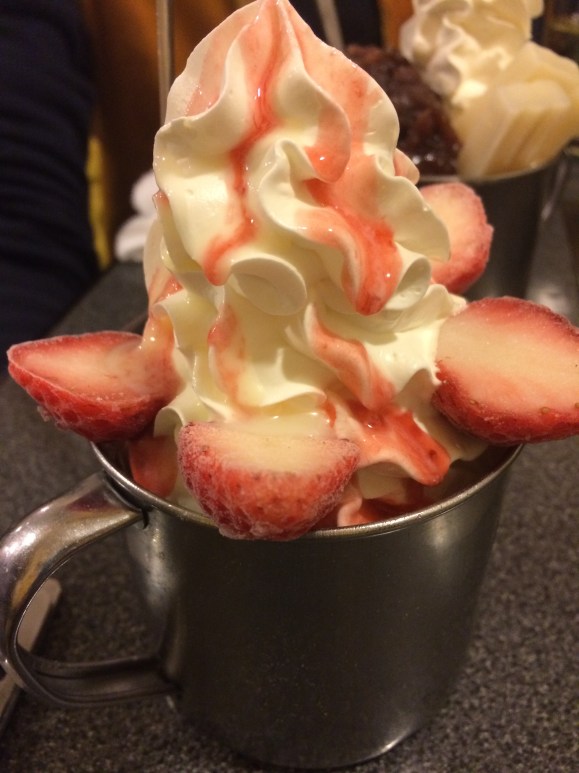
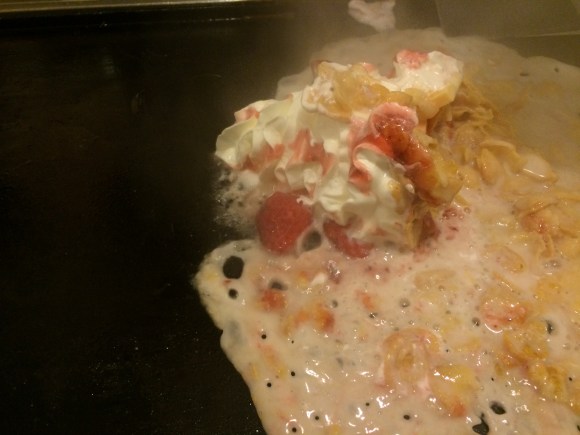
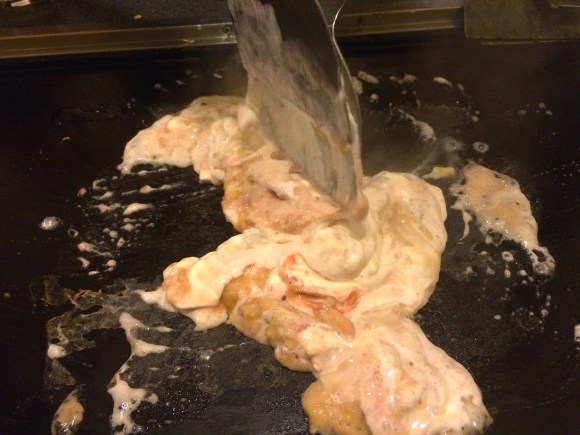
 Monjayaki vending machine appears in Tokyo
Monjayaki vending machine appears in Tokyo How to make okonomiyaki at home【SoraKitchen】
How to make okonomiyaki at home【SoraKitchen】 We cook a monjayaki Japanese pancake on the hood of a car during Japan’s hottest summer ever【Vid】
We cook a monjayaki Japanese pancake on the hood of a car during Japan’s hottest summer ever【Vid】 PewDiePie tries “every” Japanese snack and this is how people in Japan reacted to it
PewDiePie tries “every” Japanese snack and this is how people in Japan reacted to it YouTubers come under fire for destroying traditional Japanese product in controversial video
YouTubers come under fire for destroying traditional Japanese product in controversial video McDonald’s new Happy Meals offer up cute and practical Sanrio lifestyle goods
McDonald’s new Happy Meals offer up cute and practical Sanrio lifestyle goods More foreign tourists than ever before in history visited Japan last month
More foreign tourists than ever before in history visited Japan last month All-you-can-drink Starbucks and amazing views part of Tokyo’s new 170 meter-high sky lounge
All-you-can-drink Starbucks and amazing views part of Tokyo’s new 170 meter-high sky lounge Starbucks reopens at Shibuya Scramble Crossing with new look and design concept
Starbucks reopens at Shibuya Scramble Crossing with new look and design concept Beautiful Sailor Moon manhole cover coasters being given out for free by Tokyo tourist center
Beautiful Sailor Moon manhole cover coasters being given out for free by Tokyo tourist center The oldest tunnel in Japan is believed to be haunted, and strange things happen when we go there
The oldest tunnel in Japan is believed to be haunted, and strange things happen when we go there Disney princesses get official manga makeovers for Manga Princess Cafe opening in Tokyo
Disney princesses get official manga makeovers for Manga Princess Cafe opening in Tokyo Is the new Shinkansen Train Desk ticket worth it?
Is the new Shinkansen Train Desk ticket worth it? Arrest proves a common Japanese saying about apologies and police
Arrest proves a common Japanese saying about apologies and police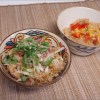 An extremely simple trick to spice up plain rice for a refreshing, citrusy summer treat
An extremely simple trick to spice up plain rice for a refreshing, citrusy summer treat We try out “Chan Ramen”, an underground type of ramen popular in the ramen community
We try out “Chan Ramen”, an underground type of ramen popular in the ramen community Beautiful new Final Fantasy T-shirt collection on the way from Uniqlo【Photos】
Beautiful new Final Fantasy T-shirt collection on the way from Uniqlo【Photos】 Foreign English teachers in Japan pick their favorite Japanese-language phrases【Survey】
Foreign English teachers in Japan pick their favorite Japanese-language phrases【Survey】 There’s a park inside Japan where you can also see Japan inside the park
There’s a park inside Japan where you can also see Japan inside the park Japanese convenience store packs a whole bento into an onigiri rice ball
Japanese convenience store packs a whole bento into an onigiri rice ball Studio Ghibli releases Kiki’s Delivery Service chocolate cake pouches in Japan
Studio Ghibli releases Kiki’s Delivery Service chocolate cake pouches in Japan Japan’s bone-breaking and record-breaking roller coaster is permanently shutting down
Japan’s bone-breaking and record-breaking roller coaster is permanently shutting down New definition of “Japanese whiskey” goes into effect to prevent fakes from fooling overseas buyers
New definition of “Japanese whiskey” goes into effect to prevent fakes from fooling overseas buyers Foreign passenger shoves conductor on one of the last full runs for Japan’s Thunderbird train
Foreign passenger shoves conductor on one of the last full runs for Japan’s Thunderbird train Our Japanese reporter visits Costco in the U.S., finds super American and very Japanese things
Our Japanese reporter visits Costco in the U.S., finds super American and very Japanese things Kyoto bans tourists from geisha alleys in Gion, with fines for those who don’t follow rules
Kyoto bans tourists from geisha alleys in Gion, with fines for those who don’t follow rules Studio Ghibli unveils Mother’s Day gift set that captures the love in My Neighbour Totoro
Studio Ghibli unveils Mother’s Day gift set that captures the love in My Neighbour Totoro Domino’s Japan now sells…pizza ears?
Domino’s Japan now sells…pizza ears? New Japanese KitKat flavour stars Sanrio characters, including Hello Kitty
New Japanese KitKat flavour stars Sanrio characters, including Hello Kitty Sales of Japan’s most convenient train ticket/shopping payment cards suspended indefinitely
Sales of Japan’s most convenient train ticket/shopping payment cards suspended indefinitely Sold-out Studio Ghibli desktop humidifiers are back so Totoro can help you through the dry season
Sold-out Studio Ghibli desktop humidifiers are back so Totoro can help you through the dry season Japanese government to make first change to romanization spelling rules since the 1950s
Japanese government to make first change to romanization spelling rules since the 1950s Ghibli founders Toshio Suzuki and Hayao Miyazaki contribute to Japanese whisky Totoro label design
Ghibli founders Toshio Suzuki and Hayao Miyazaki contribute to Japanese whisky Totoro label design Doraemon found buried at sea as scene from 1993 anime becomes real life【Photos】
Doraemon found buried at sea as scene from 1993 anime becomes real life【Photos】 Tokyo’s most famous Starbucks is closed
Tokyo’s most famous Starbucks is closed One Piece characters’ nationalities revealed, but fans have mixed opinions
One Piece characters’ nationalities revealed, but fans have mixed opinions We asked a Uniqlo employee what four things we should buy and their suggestions didn’t disappoint
We asked a Uniqlo employee what four things we should buy and their suggestions didn’t disappoint Princesses, fruits, and blacksmiths: Study reveals the 30 most unusual family names in Japan
Princesses, fruits, and blacksmiths: Study reveals the 30 most unusual family names in Japan Studio Ghibli’s new desktop Howl’s Moving Castle will take your stationery on an adventure
Studio Ghibli’s new desktop Howl’s Moving Castle will take your stationery on an adventure Japanese restaurant sears sushi with a soldering iron【Video】
Japanese restaurant sears sushi with a soldering iron【Video】 The Fuwatoro Yamaimo Teppan just might be 7-Eleven Japan’s dish of the year【Taste test】
The Fuwatoro Yamaimo Teppan just might be 7-Eleven Japan’s dish of the year【Taste test】 Newly opened restaurant in Osaka boasts a new evolution of okonomiyaki
Newly opened restaurant in Osaka boasts a new evolution of okonomiyaki We talk to Matt Damon in Tokyo about films, Tommy Lee Jones and how to be cool like Jason Bourne
We talk to Matt Damon in Tokyo about films, Tommy Lee Jones and how to be cool like Jason Bourne Does this Dormy Inn near Mt. Fuji offer the best business hotel breakfast in all of Japan?
Does this Dormy Inn near Mt. Fuji offer the best business hotel breakfast in all of Japan? How many do you know? 12 delicious foods in Japanese supermarkets and convenience stores
How many do you know? 12 delicious foods in Japanese supermarkets and convenience stores Our Japanese reporter heads to Okinawa and a U.S. military casino to try and win it big
Our Japanese reporter heads to Okinawa and a U.S. military casino to try and win it big Everything you need to know about takoyaki (octopus balls) 【Video】
Everything you need to know about takoyaki (octopus balls) 【Video】 Is Daiso’s 500-yen grilling plate good enough for at-home yakiniku dinners? We find out!
Is Daiso’s 500-yen grilling plate good enough for at-home yakiniku dinners? We find out! Tokyo pub lets you grill traditional Japanese dessert right at your table in all-you-can-eat deal
Tokyo pub lets you grill traditional Japanese dessert right at your table in all-you-can-eat deal Osaka to Fukuoka for less than 40 bucks? It’s possible with Japan’s overnight ferry
Osaka to Fukuoka for less than 40 bucks? It’s possible with Japan’s overnight ferry During trying times, receive comfort and advice from Boss coffee’s poster boy Tommy Lee Jones
During trying times, receive comfort and advice from Boss coffee’s poster boy Tommy Lee Jones Japanese stir-fried noodles a huge hit in Kenya
Japanese stir-fried noodles a huge hit in Kenya Beautiful manga-style festival poster is drawn by the person you would least expect
Beautiful manga-style festival poster is drawn by the person you would least expect How to make delicious tofu chocolates: all the taste with half the calories 【RocketKitchen】
How to make delicious tofu chocolates: all the taste with half the calories 【RocketKitchen】 Okonomiyaki you can eat with one hand? We try a revolutionary new frozen food【Taste test】
Okonomiyaki you can eat with one hand? We try a revolutionary new frozen food【Taste test】
Leave a Reply